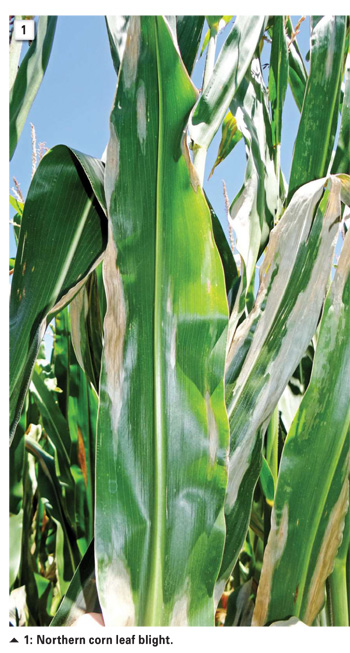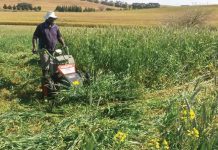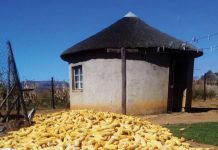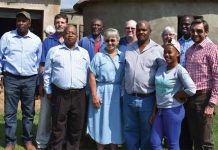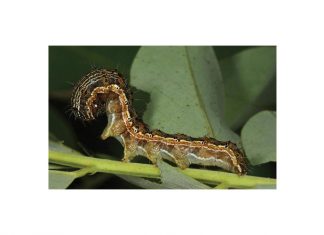September 2017
Dr Maryke Craven, ARC-Grain Crops, Potchefstroom
Northern corn leaf blight is probably the most widespread leaf disease on maize in South Africa. It tends to be especially severe in the eastern parts of the country, e.g. KwaZulu-Natal and Mpumalanga. It is also common and causes serious yield losses, even in the drier western parts, particularly under irrigation systems along the Vaal, Modder and Orange river systems.
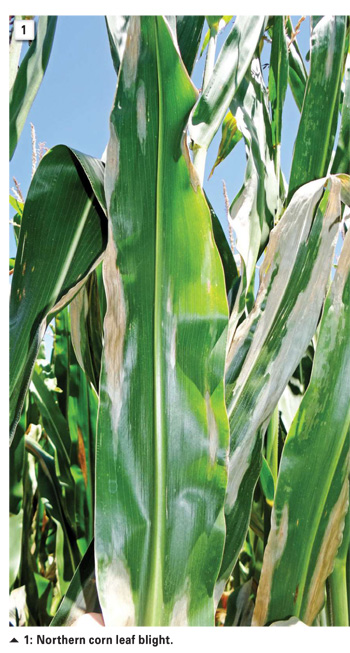 International literature estimated yield losses attributed to northern corn leaf blight to vary between 2% and 8% for every 10% increase in northern corn leaf blight (Photo 1) disease severity. In general, yield losses that most commonly occur are between 15% and 30%.
International literature estimated yield losses attributed to northern corn leaf blight to vary between 2% and 8% for every 10% increase in northern corn leaf blight (Photo 1) disease severity. In general, yield losses that most commonly occur are between 15% and 30%.
As part of a larger study currently being conducted on northern corn leaf blight, two field trials were planted by ARC-Grain Crops at Potchefstroom during mid-November and mid-December 2016 respectively.
Three irrigation maize hybrids were included, representing hybrids with different resistance or susceptibility. The aim of these trials was to create varying degrees of disease severity in order to establish the yield impact as experienced by the three cultivars as a result of infection. All treatments were replicated three times.
Due to the first trial being planted during mid-November, the establishment of northern corn leaf blight was slow, as opposed to the second planting date, where lesions were observed even before inoculation. From the results, it was clear that three cultivars differed regarding their inherent yield potential, with Cultivar 1 having the highest yield, followed by Cultivar 3 and lastly Cultivar 2.
Graph 1a and Graph 1b represents the eventual regressions plotted between yield (as percentage of control) and disease severity at dent stage obtained for the three cultivars at the two planting dates.
An initial observation was that the disease was only established with the first planting after inoculation was conducted, whilst it was already present in the second trial when inoculation commenced.
Where the disease was slow to establish (planting 1), Cultivar 1 suffered a 0,32% loss in yield for every 1% increase in disease severity as opposed to Cultivar 3 which had a 0,39% yield loss per 1% disease increase.
With the later planting (mid-December), we observed that Cultivar 1 now experienced a yield loss of 0,67% per 1% disease increase as opposed to Cultivar 3 which experienced a 0,45% yield loss per 1% disease increase.
Cultivar 2, on the other hand, managed to maintain its yield irrespective of the disease severity observed at dent stage, which was as high as 60%. As however mentioned, the hybrid in general had a lower yield potential, which points to the ‘yield penalty’ that is speculated to be associated with the incorporation of resistance into crops.
Although the findings discussed here only represent one-year data, a number of important aspects were again emphasised by the study.
Early infections will result in greater disease losses. As observed during our 2016/2017 trials, the early planting were slow to develop disease, most probably due to the climate not being ideal for disease development.
The two susceptible cultivars (Cultivar 1 and Cultivar 3) at this point had very similar yield losses (0,32% and 0,39% per 1% increase in disease severity). With the second planting date, the disease was already established very early, resulting in Cultivar 1 having a higher rate of yield loss compared to Cultivar 3.
Cultivar 2, initially included as a resistant variety, ended up having a disease severity of close to 60% at dent stage of the first planting, yet not suffering any significant yield losses.
From this observation two things must be highlighted. The first is that applying fungicide on this cultivar did not significantly increase the yield, even when compared to the plots where the cultivar suffered almost 60% disease severity.
The second aspect is, however, that even though it had resistance, the eventual yield obtained was still lower compared to that of the other two cultivars which were severely susceptible.
Producers are welcome to contact Dr Maryke Craven at 018 299 6100 with any further questions.
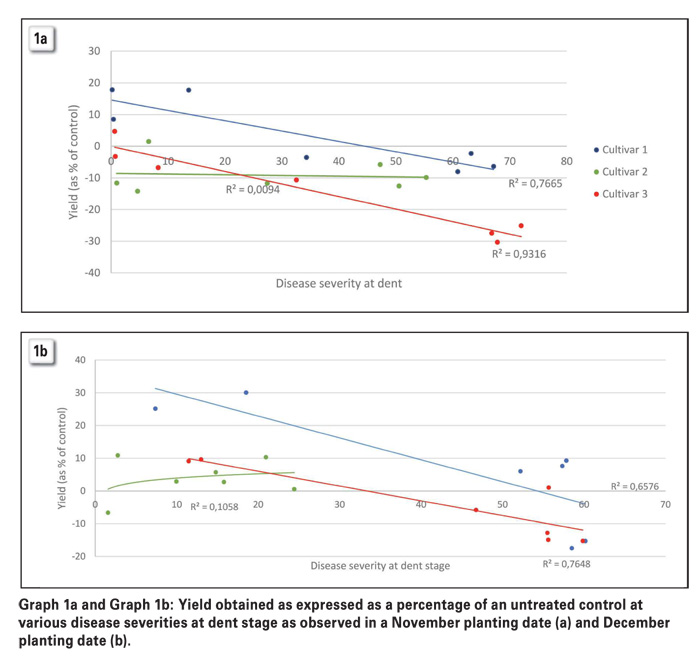
Publication: September 2017
Section: Focus on



